How to thin out carrots?
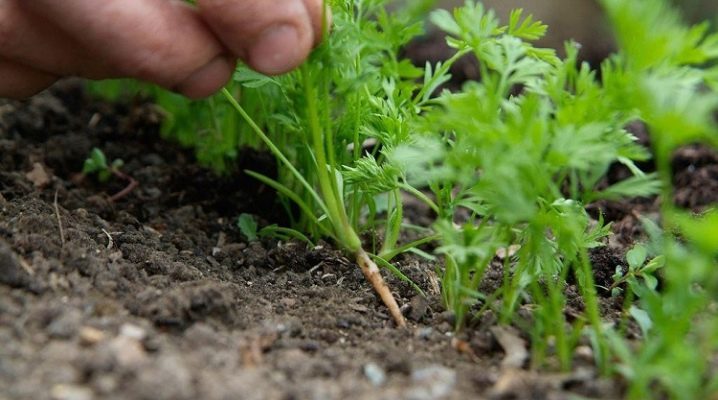
If a beginner who is just starting to master gardening skills thought that, having planted a crop, it was enough to water, feed it and not forget to pull out the weeds, then he was mistaken. One of the main measures is to plant the carrots so that the individual plants do not interfere with each other.

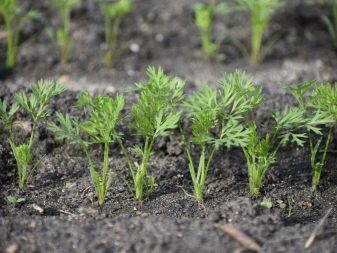
The need for a procedure
Thinning carrots is required when the gardener initially planted it too tightly, in tight rows. From the outside, it seems that the plants should be carried away from each other, and this culture did not have to be thinned out. In reality, this procedure has the following advantages.
- The more space (in area) for a specific plant, the larger a certain fruit will be... The idea is that the shoots will not have to desperately fight for survival, they take exactly as much nutrients as they initially need, and widely, far-apart specimens will calmly take the resource that is in the soil in abundance.
- Carrots, like many other crops, require good lighting.... The further the plants are bred, the less they shade each other.
- Far from each other, the planted plants will cease to strive to become as high as possible.... This will have a beneficial effect on the mass gain of root crops.
- The procedure also allows to identify sprouts that initially give a good harvest.
- The yield will double - due to the same principle of the absence of a struggle for existence.
By following these rules, every year you get root vegetables that turn out to be large and sweet. The carrots will not turn green from the side where the tops grew, its taste will not be bitter, the structure, consistency will not be disturbed.


Dates of the
The growing season for growing carrots does not allow more than two-fold thinning of a given crop. This is necessary so that the roots of other plants are not damaged. The first procedure is performed after the appearance of two full-fledged leaves on the grown seedlings. After planting the seeds, this session is done in a month and a half. Leave an interval of 2-3 cm between adjacent shoots.
After a month, thinning is carried out again.... An indicator of the suitability of plants for thinning is the appearance of 6 full leaves. Depending on the region, the session is performed in June - for the southern regions, in July - for the middle and more northern regions.
The ways
There are several methods for carrying out the procedure. All of them are considered from the standpoint of growing carrots in the open field. In the greenhouse, the recommendations for thinning carrots are generally the same.
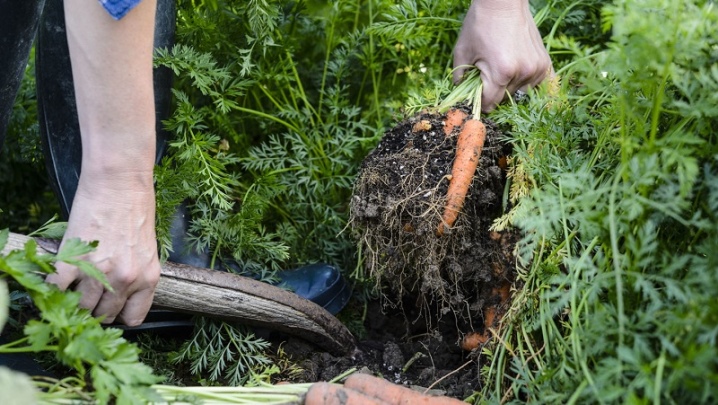
Classical
A pitchfork or small shovel is used. The task is to completely pull the carrot out of the soil without damaging the plants themselves. Then they are transferred to the free space of the site. The classical method of thinning plants is dangerous by possible damage to neighboring plants. It is not always possible to completely remove the bush (and transfer) - the lateral roots grow reliably into the ground. The lower part with a piece of the main root will remain in the soil, which will ultimately lead to a root crop that is too short. A piece of root torn off during the extraction of the plant will not give repeated shoots and will die.
This method is used with the greatest care. The transplant holes must be prepared in advance.
Scissors
The most irrational method is using scissors. First of all, the trimmed tops cannot re-emerge, even when the root remains in the ground: often these plant remains are not viable. Neighboring plants can also be touched by careless movements. Finally, the harvest can be lost completely. To eliminate unnecessary costs (in fact, up to half of the seeds are thrown away), follow the following methods.
- Do not buy extra seeds if there is not enough space on the plot for carrots. "Undershooting" is better than defusing - no extra work to do.
- If the seeds remain, store them in a dark, tightly sealed container, for example, in Aseptolin bottles (100 ml), in a dark, dry and cool place. They may come in handy if you live in the southern regions and have a greenhouse / greenhouse for two or more harvests per year.
Both of these rules will allow you not to thin out the carrot bed. Some gardeners, when thinning carrot shoots, use a knife - at a depth of 2.5 cm, they cut the roots and take them out, however, the shortened main root is unviable, most of the shoots do not take root.

Garden tweezers
Tweezers to remove excess vegetation will help in cases where your hand does not fit between densely planted plants. Disadvantage - perfected movements are required, otherwise you can grab the wrong plant. Garden tweezers are equipped with teeth that "gnaw" the shoots. Compared to cutting with sharply sharpened scissors and pruning shears, tearing off shoots leads to the formation of torn edges, which is fraught with the penetration of infection into the soil itself and into the cut plant.
Thinning carrots helps to get rid of weak, not fully developed seedlings - transplanting such a biomaterial is impractical, the result is not worth the work done. This will give a good chance to get large roots from their healthier counterparts.
What to do with removed carrots?
Gardeners, most of whom are mostly practical owners, do not throw out the extracted carrot seedlings, but transplant them to another place. This can be done, for example, under an apple tree - the roots of fruit trees mainly go down, as deep as possible, which cannot be said about berry bushes, for example, raspberries. These shoots are planted with the same indents in all directions as those remaining after thinning in order to avoid repeating the procedure. The best way is not to lose extra shoots, as already noted, early planting of seeds or seedlings with the distance necessary for normal growth.
To reduce the cost of irrigating carrots, it is recommended to install a drip irrigation system in advance. One way or another, the transplanted shoots take root with difficulty. Even when the procedure is carried out correctly, with the removal of the clod of earth along with the roots of the plant, the sprout may wilt, after which it will be impossible to save it.
Carrots are transplanted only after the first thinning. If you transplant the plants during the second session, you will get small carrots.
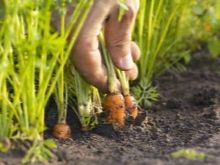

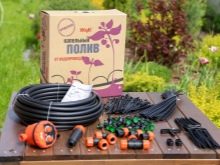
Possible errors and consequences
Carrot transplant is performed early in the morning - before sunrise. At this time, the temperature of the air and soil is the lowest, and the growing processes are the slower, the colder it is. In addition, carrots have a pest - a carrot subspecies of a fly that feeds on juice and tissues of root crops, green shoots of plants. Too late in the time of day, thinning will lead to guaranteed attraction of a swarm of this insect, the presence of which is extremely undesirable for a plant that has experienced a shock during the "resettlement".
When removing excess plants, the soil must be leveled and tamped, if necessary, sprinkled on it, especially after transplanting seedlings in lumps of earth, extracted along with the roots. If the original ground level is not restored, then the half-naked roots will receive too much air and wither.For respiration and vital activity, the roots must necessarily be well dug: the air is good for plants in moderation, oxygen and nitrogen must be absorbed from the soil in portions, sequentially. "Over-airing" of carrot roots is fraught with withering shoots, stopping the growth of transplanted and thinned sprouts and already grown plants, the threat of transferring the "harvest" period or its complete disruption this year. The layer of earth, removed during excavation, will expose the underlying layer, which will dry out, and the daytime heat, overheating will come close to the carrot roots.
If you are not using drip irrigation, then install a sprinkler. Turn it on in the evening, at sunset or after sunset. Watering garden crops, including carrots, in this way during the heat, in the midday heat will lead to burns of the tops: water droplets play the role of a kind of collecting lenses, leading the plants to burns.
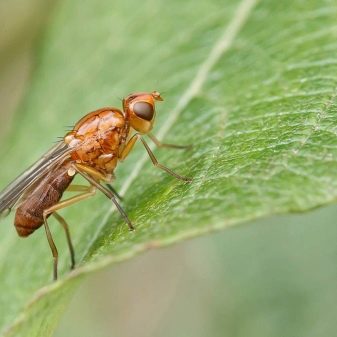
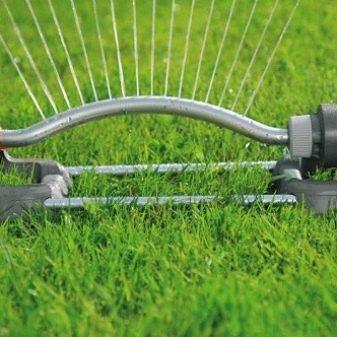
It is generally not recommended to water carrots in bright sun: wet ground, overheating in an hour or two, will turn into a kind of steam bath, and the plants will wither, which will slow down their growth and postpone the harvest time.
The tops, which were not cut in time to a length of 8 cm, impairs the survival rate of the transplanted seedlings. A non-vertically planted root also leads to impaired survival of the transplanted seedling: the root crop can turn out to be small, irregular in shape. Immerse the newly dug seedlings in a container of water. This will help you win about half an hour - the plants will not wither right away, but will last this time until you complete the preparation of the holes for them. The procedure is carried out on a specific day, it is forbidden to stretch it in time.
Do not neglect weeding carrot seedlings, especially when germinating in a greenhouse... Weeds germinate much faster than carrot sprouts that are too slow. It is advisable to remove them manually - without a hoe or other tool, otherwise the carrot will be accidentally mown. Weeds tend to suck everything out of the soil. In the struggle for survival, they are practically merciless, symbiosis will not work - you will simply lose your harvest. Do not use kerosene, herbicides and pesticides to weed weeds: they get into the soil, then into the roots themselves, and then into the body of the summer resident.
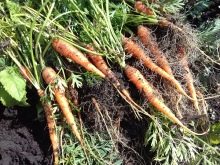
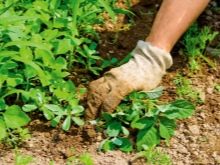










The comment was sent successfully.